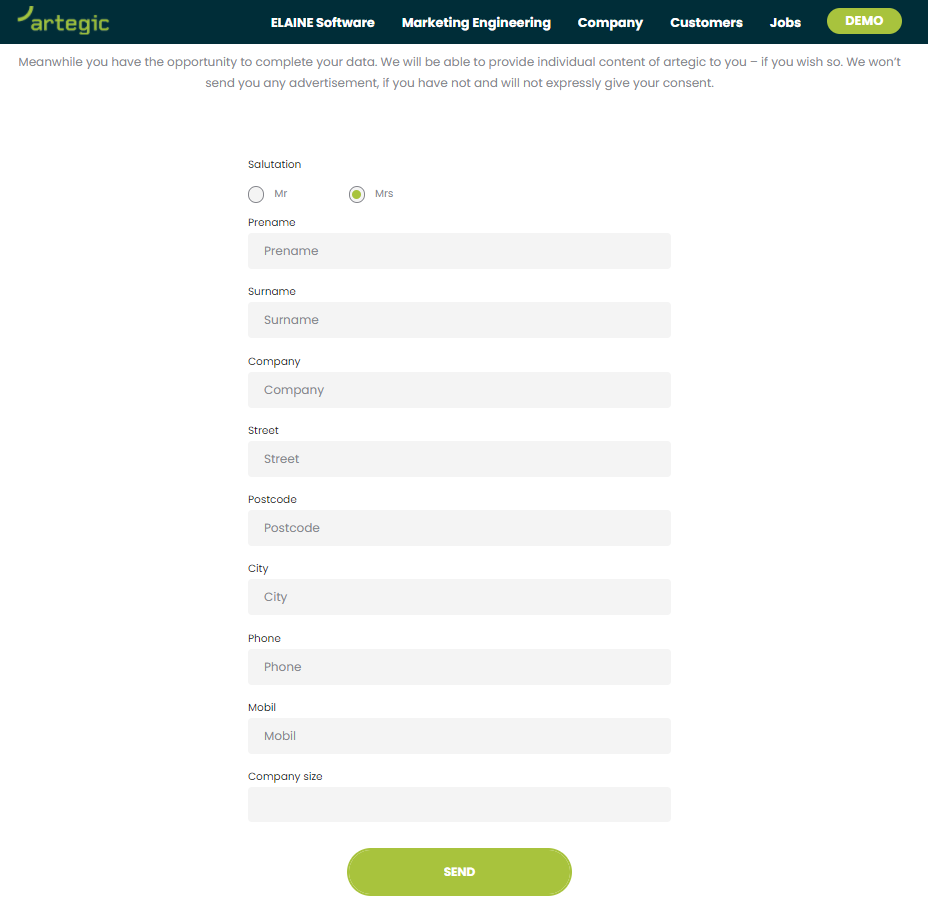The article Higher Return on Investment Through Successful Lead Nurturing in Email Marketing deals with the development of users in B2B into prospective customers, using individualised email marketing in the customer lifecycle, i.e. lead nurturing. The next step consists in rating the potential of a user – lead scoring – and transferring the most interesting users to sales – lead routing.
There are different methods to determine when a user is “mature” enough to transfer him to the sales department. In our article Higher Return on Investment Through Successful Lead Nurturing in Email Marketing, we have already talked about multi-level follow-up campaigns, which after their “successful completion” can trigger increased interest of the user so he is ready for a personal offer.
Measuring the customer potential by lead scoring
Furthermore, you can use scoring measures, which add a point value to every response and non-response, e.g. 5 points for an open, 10 points for a click, 20 points for a download, -10 points for no response to a mailing etc. When the total point value exceeds a certain limit pre-defined by the sales team, the user is classed as sufficiently developed for a sales approach. This type of scoring can also be topic-related, which would make sense when the products or services on offer are targeted at different application areas and the relevant individual content needs to be communicated.
Analyse Customer Potentials
A user who based on his high level of interest could be a prospective customer, is not necessarily a lucrative customer. A user, e.g. who does not dispose of the financial means or has no power to make decisions, has little relevance as a customer. Typical questions at this point would be:
- How high is the turnover potential?
- Is the user authorised to make decisions or can he significantly influence a decision in favour of your offer?
- Which ROI can be expected?
- Could there be positive effects on the brand (e.g. when the customer is not lucrative but due to his reputation, he could be a good reference)?
In order to answer these questions, you will need information on the user (position, department. etc.) as well as on his company (size, turnover, sector, etc.). This information can be obtained during the course of the lead nurturing process, e.g. by explicitly asking the user to complete his profile.

After users have signed up for the newsletter they‘re asked to complete their profile. The information are easily filled out in a form.
Most information can be researched by means of a few basic details, e.g. position and company. The company however can often be identified from the email address and the position possibly through a business network, such as LinkedIn.
When it comes to the evaluation of the customer potential, it might make sense to use a point system and assign the different total values to different sales measures. Who would be most suitable to take on the evaluation of the customer potential (marketing, sales, business development, etc.) depends on the individual company. However, the evaluation procedure should be developed together by marketing and sales.
Transfer of the Prospective Customer
When a user has been evaluated as an interesting prospective customer in the context of the lead scoring, he can be transferred to Sales (in case, Sales was not involved in the lead scoring already) in order to target him with a personal offer – lead routing.
IMPORTANT: In any case, a feasibility study by Sales should take place in in advance, i.e. it should be established if the resources necessary for the acquisition are available and if the potential demands of the customer can be met after the acquisition.